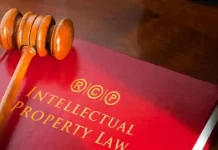A motorist turns or merges into a lane where there is already a car. Technology like blind-spot monitors and lane departure warning noises have helped, yet accidents continue to happen. A lot of factors might contribute to this, but distracted or reckless driving is usually to blame.
How can you figure out who was at blame in a lane change collision and file a claim for damages against the negligent motorist who caused your injuries?
Consult a Philadelphia, PA motorcycle accident attorney who specializes in personal injury lawsuits if you have questions regarding your rights and possible courses of action following an accident.
Determine Who is at Fault in a Crash Caused by a Lane Change
The best way to ensure everyone’s safety on the roads is for drivers to pay close attention to their surroundings and remain alert at all times. As such, drivers need to make use of their vehicle’s safety features, such as their mirrors, and check their blind areas before making maneuvers like turns, lane changes, and merging. Your defensive driving skills and alertness on the road may not be enough to protect you from another driver’s carelessness, but you may take several precautions to reduce the likelihood of an accident involving a lane change.
You may be at blame for causing a lane change accident if you engage in risky driving behavior or if you operate your vehicle carelessly by failing to take the usual measures before switching lanes. It’s possible that a collision caused by a lane shift was the result of the actions of more than one motorist.
Investigation of the facts and circumstances surrounding a lane change collision is crucial in determining culpability. In order to prove that the other motorist was at blame for the collision, proof of their carelessness or recklessness will be essential. Identifying who is at fault might be difficult and lead to a “he said, she said” argument. Evidence, such as witness testimony, will be crucial in assessing what occurred in the accident and who is at responsible for causing it. The presence of physical proof will also be crucial. The collision can be reconstructed and fault determined based on factors such as road debris, the kind and extent of damage to both vehicles, and the placement of the vehicles on the road.























